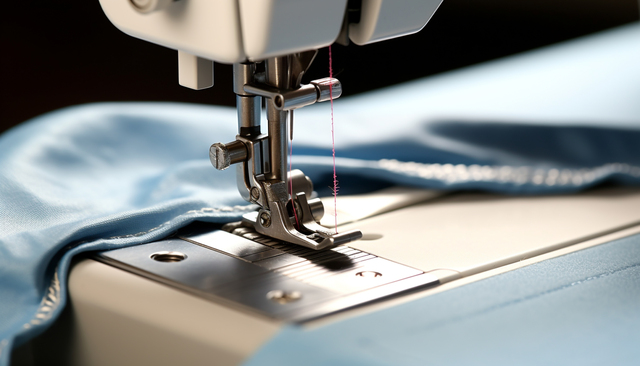Category: News
A Strategic Collaboration for Success

Over the years, we here at Credebt® have supported several mineral trades and have worked with mining companies across the globe. Similarly, we have worked with quarries extracting minerals from the surface. Recently one of our long-term clients who provides capital equipment, processing and engineering solutions to the quarrying industry became interested in acquiring a quarry.
The quarry that caught their interest has been active for more than forty years with ten million metric tonnes of reserve. This quarry is used to manufacture sand to be used in block-making and concrete production. Nearby roadworks projects provide an excellent opportunity for long-term revenue for the venture. Our client approached us with an offer for a partnership in the project. Credebt® provided the majority of the capital required for the purchase and our client is providing their experience and expertise in upgrading the plant and managing the operation. Further funding will also be provided for the machinery and equipment necessary to increase production to the level required to support large-scale projects.
Credebt® has worked closely with this company since 2019 on several successful projects. The company was created from a selection of successful companies with more than 30 years of experience in the material handling industry and consists of over two hundred employees throughout the United Kingdom. They apply their expertise in aggregate production and excel at creating processing solutions suitable for major projects involving hard rock, limestone, sand, gravel, precious minerals and chemicals. They design and manufacture material processing plants providing engineering, mechanical and electrical works. They also supply high-quality processing machinery and equipment, complete production management and trained on-site operators. Their combined service offerings provide them with the ability to be cost-effective while at the same time offering bespoke solutions specific to each client.
The history of quarries dates to ancient times and has played a significant role in shaping human civilisations. Throughout history, quarries have been essential for providing raw materials for various construction projects extracting natural rocks, minerals or aggregates making them a crucial aspect of human development. The demand for limestone, granite, sand or gravel in the construction industry makes owning a quarry a potentially lucrative investment. When undertaking a project as big as acquiring and managing a quarry there are several factors that require consideration such as location, quality of materials, operational costs and market demand all of which greatly influence the profitability and sustainability of the quarry. Our client is perfectly suited and positioned to use their experience to make this project a success.
We take pride in our longstanding collaboration with this client, supporting them in their growth for the past six years. We are excited to continue partnering with them on their new venture and help ensure its success.
More Posts Like This
Unlocking Cash Flow for Expansion in Irelandâs Food and Catering Industry
From Harvest to Market: Financing the Future of the Sugar Trade
Interesting Facts and Opportunities of Bauxite Rocks

In the world of mining and natural resources, bauxite rocks are highly sought-after commodities due to their versatile applications in various industries. Here at Credebt® we are highly interested in companies that deal in mineral and natural resources with fascinating components. We are currently working with a client who is based in Cameroon and engages in the export of bauxite rocks to sell to their customers in China. They pride themselves on providing high-quality commodities that meet the demands of their customers.
Bauxite is a type of sedimentary rock that is rich in aluminium minerals. It is formed through the weathering of aluminium-rich rocks such as granite and basalt. The minerals then undergo a process called lateralisation, where intense weathering in tropical climates leaches out silica and other impurities, leaving behind a residue rich in aluminium hydroxide. The bauxite deposits are commonly found in tropical and subtropical regions, with the largest reserves located in countries like Australia, China, Guinea and Brazil. The concentration of bauxite in specific geographical regions has a significant impact on the global aluminium supply chain. The physical properties of bauxite rocks include a dull lustre, earthy texture and a wide range of colours such as red, brown and yellow. These rocks exhibit unique properties that make them ideal for various industrial applications. Additionally, its hardness, colour variations and corrosion resistance further enhance its value in industrial processes.
Bauxite rocks hold significant industrial importance due to their rich aluminium content making them a valuable resource for various industries worldwide. From aerospace technology to beverage cans, aluminium derived from bauxite plays a pivotal role in modern society. Furthermore, these rocks are also crucial ingredients used in the production of cement as it is used as a flux to reduce the melting point of raw materials and promote the formation of clinker. The addition of bauxite helps improve the strength, durability and workability of cement, making it an essential component in the construction industry.
The exploitation of bauxite rocks presents various opportunities that extend beyond mere industrial applications. It presents lucrative investment opportunities for companies seeking to capitalise on the growing demand for aluminium products worldwide. It also drives infrastructural development and generates revenue through exports therefore giving these countries leverage to boost their economic growth and diversify their industrial base. With advancements in technology and sustainable practises, bauxite extraction can be done efficiently and responsibly, which opens new opportunities for resource utilisation and value addition. Innovations in refining processes, waste management techniques and product diversification have expanded the scope of bauxite applications beyond traditional aluminium production. Additionally, research into alternative uses for bauxite residues presents exciting prospects for the future of this mineral.
In conclusion, bauxite rocks are a valuable natural resource with a wide range of uses and opportunities. From aluminium production to economic development, bauxite rocks play a crucial role in various industries and societies around the world. By understanding the interesting facts and potential benefits of bauxite rocks, we can better appreciate their significance and potential for the future.
More Posts Like This
Export Opportunities in Lesotho's Expanding Tyre Market
Unlocking Cash Flow for Expansion in Irelandâs Food and Catering Industry
From Harvest to Market: Financing the Future of the Sugar Trade
The Impact of E-commerce on the Garment Industry

The garment industry has witnessed significant growth in recent years with more consumers turning to online shopping for their clothing needs. In this dynamic and competitive sector the role of finance plays a crucial part in the success of businesses. We are working with a client based in Europe who is buying fabric from Turkey to be fabricated into women’s dresses in Bulgaria and then sold online using an e-commerce platform. One of the challenges of e-commerce is the length of time between manufacturing and the sale. Credebt® helps our digital retail clients by providing a facility to pay the supplier based on the revenue generated on the online store.
The rise of e-commerce has significantly transformed the garment industry. As more and more consumers turn to online shopping for convenience and accessibility, garment retailers have had to adapt to this shift in consumer behaviour. With online platforms, retailers can reach a global audience without the need for physical storefronts. This has opened up a plethora of opportunities for small and medium-sized garment businesses to compete with established brands on a level playing field. Additionally, e-commerce allows retailers to gather valuable data on consumer preferences and trends enabling them to tailor their offerings accordingly.
As garment companies continue to adapt to the digital age, embracing e-commerce and leveraging cutting-edge technologies will be crucial for their success.
While e-commerce offers numerous advantages, it also presents challenges for the garment industry. Financial risks are inherent including market volatility, inventory management challenges and changing consumer preferences. Identifying and assessing these risks is essential for businesses to develop strategies to mitigate them effectively. Establishing a contingency plan for unexpected financial challenges can help businesses navigate economic uncertainties and ensure financial stability in the long run.
E-commerce has reshaped consumer behaviour in the garment industry in several ways. Firstly, online shopping offers unparallelled convenience allowing customers to browse and purchase clothing from the comfort of their homes. Additionally, the rise of social media influencers and online reviews has influenced consumer purchasing decisions, driving trends and preferences in the garment industry. As a result, garment retailers must stay abreast of changing consumer behaviour to remain competitive in the e-commerce landscape.
The future of the e-commerce garment industry holds immense potential for growth and innovation. Finance plays a pivotal role in the success of e-commerce operations offering a wide range of benefits for businesses looking to capitalise on the digital marketplace. By leveraging online platforms businesses can expand their reach to a global audience, increase sales volumes, reduce operational costs and enhance customer engagement. Additionally, e-commerce provides valuable data insights that can help businesses make informed decisions and drive strategic growth.
E-commerce will continue to revolutionise the way we shop and do business offering convenience, personalisation and accessibility to consumers around the world. As we look ahead it is clear that e-commerce will play an increasingly significant role in the global economy shaping the way we buy, sell and interact in the digital age.
More Posts Like This
Export Opportunities in Lesotho's Expanding Tyre Market
Unlocking Cash Flow for Expansion in Irelandâs Food and Catering Industry
From Harvest to Market: Financing the Future of the Sugar Trade
The Rise of Solar Backpacks in a Sustainable Environment

In an innovative world where technology thrives, Credebt® is interested in companies that produce eco-friendly and sustainable products like solar backpacks.
At present, we are in discussion with an IT company that specialises in renewable energy, specifically solar technology and Internet of Things (IoT) solutions. The company buys solar backpacks from its suppliers in China and sells them to its customers in Nigeria. Through this, the company promotes the integration of IoT technology with solar systems, enabling users of these backpacks to monitor and optimise energy consumption.
Solar backpacks are backpacks equipped with solar panels on the exterior and these panels are used to capture sunlight and convert it into electricity which can then be used to charge devices such as smartphones, tablets, GPS devices and many more. These backpacks are designed to be durable and weather-resistant, ensuring they can withstand the rigours of outdoor activities and varying environmental conditions. In outdoor adventures, solar backpacks find diverse applications beyond charging electronic devices. They can be used to power portable lighting systems, enhancing visibility during night hikes or camping trips. Furthermore, solar backpacks can serve as emergency communication tools by keeping essential devices operational in challenging situations such as when stranded or in distress. The technology behind solar backpacks has advanced significantly in recent years making them more efficient and lightweight than ever before.
Solar backpacks are typically manufactured in countries with a strong presence in the electronics and textile industries such as China, South Korea and Taiwan. These countries have the necessary infrastructure and skilled labour force to produce high-quality solar panels and backpacks at competitive prices. By manufacturing solar backpacks in these locations, companies can benefit from lower production costs and faster turnaround times.
The raw materials used in the production of solar backpacks such as solar panels, batteries and fabric are often sourced from different parts of the world. For example, silicon which is used to make solar panels, is primarily sourced from countries like China and the United States. Silicon is the most widely used material for solar panels due to its high efficiency in converting sunlight into electricity. To store the electricity generated by the solar panel, a rechargeable battery is used in the backpack. Lithium-ion batteries are commonly used for their lightweight and high energy density. The raw materials for lithium-ion batteries, such as lithium, cobalt and nickel are often sourced from countries like Australia and Chile. The outer shell of the backpack is typically made from durable, water-resistant fabric such as nylon or polyester. These materials are made in countries with strong textile industries such as China, India and Vietnam. By understanding where these materials are sourced from we can better appreciate the intricate process behind the creation of these innovative and sustainable products.
In recent years, there has been a growing trend towards sustainability and eco-friendly products. People are becoming more conscious of their impact on the environment and are looking for ways to reduce their carbon footprint. Solar backpacks offer a practical and convenient way to do this, allowing you to charge your devices using clean and renewable energy. Additionally, advancements in solar technology have made solar panels more affordable and efficient, making solar backpacks an attractive option for many consumers.
In summary, Solar backpacks are a game-changer for outdoor enthusiasts looking to stay connected while on the go. By harnessing the power of the sun, these innovative backpacks offer a sustainable alternative to traditional charging methods. With their environmental benefits, convenience and cost-saving potential, it is no wonder that solar backpacks are on the rise in the sustainable environment movement.
More Posts Like This
Export Opportunities in Lesotho's Expanding Tyre Market
Unlocking Cash Flow for Expansion in Irelandâs Food and Catering Industry
From Harvest to Market: Financing the Future of the Sugar Trade
The Crucial Role of Antimony Ore in the Global Economy

Credebt’s® support for commodity trading includes important raw materials necessary for the industrial supply chain and the world economy. Another vital resource traded by our clients is Antimony Ore.
Antimony is a silvery-white metal commonly found in mineral deposits. It is extracted from stibnite, a sulphide mineral known for its high melting point and resistance to corrosion. The ore is typically processed to produce antimony metal. This metal plays a crucial role in the global economy as it is an essential raw material for many industries. It is valued for its unique properties including its ability to act as a flame retardant in textiles and plastics. It is also used in the production of lead-acid batteries which are commonly found in vehicles and electronic devices. In addition to these applications the ore is used in the manufacturing of alloys, ceramics and glass.
The global market for antimony is characterised by fluctuating prices and supply chain challenges. China is the leading producer of antimony ore followed by countries such as Russia, Bolivia and Tajikistan. The demand for antimony is driven by its use in industries such as electronics, healthcare and construction.
Despite its diverse range of applications, the antimony ore trade faces several challenges. One of the main concerns is the environmental impact of mining and processing antimony ore which can result in pollution and habitat destruction. In addition, market volatility and regulatory changes can impact the profitability of the trade.
The antimony trade is a dynamic and complex market that offers both opportunities and challenges for traders. In recent years there has been a growing demand due to its use in new technologies such as electric vehicles and renewable energy storage systems. This has led to increased investment in antimony mining projects and a rise in the number of traders entering the market. However, geopolitical factors and trade disputes can also influence supply and demand dynamics. Global trade of antimony ore involves intricate supply chains connecting miners, traders and end-users worldwide.
Financing in the antimony ore trade is essential. It allows traders to secure the necessary funds for procurement, transportation and storage of the ore. Different types of financing such as letters of credit, trade finance and supplier credit are used to facilitate transactions.
Antimony Ore is an essential raw material and plays a crucial role in the global economy. Financing plays a vital role in ensuring the seamless flow of ore between producers and consumers. Understanding the intricacies of financing and being prepared to mitigate risks is essential. Effective financing mechanisms enable the trade to thrive and meet the demands of industry globally.
More Posts Like This
Export Opportunities in Lesotho's Expanding Tyre Market
Unlocking Cash Flow for Expansion in Irelandâs Food and Catering Industry
From Harvest to Market: Financing the Future of the Sugar Trade
Harnessing the Potential of Carbon Credits Trading for a Sustainable Future

In an era increasingly defined by climate challenges, Credebt® has developed an interest in companies looking to combat climate change, promoting green investments and sustainable practises.
Currently, we are working with a client who is based in the USA that specialises in carbon credit trading. They buy carbon credits from their suppliers in Malaysia and sell to their customers in Singapore to offset greenhouse gas emissions from the atmosphere and promote a sustainable environment for businesses.
Carbon credits represent a permit allowing the holder to emit a certain amount of carbon dioxide or greenhouse gas. One carbon credit equates to one metric ton of carbon dioxide. Organisations that reduce their emissions below a specified cap can sell their excess credits to those that exceed their limits. This creates a financial incentive for companies to adopt greener practises, invest in renewable energy and implement energy efficiency measures. The process of carbon credits trading is relatively simple. Companies that need to offset their carbon emissions can purchase credits from projects that have reduced emissions or sequestered carbon from the atmosphere. These projects can range from renewable energy initiatives to reforestation efforts. Once the credits are purchased, they can be used to comply with regulatory requirements or to demonstrate a commitment to sustainability.
The carbon credit industry plays a crucial role in promoting sustainable practises and combating climate change by incentivising businesses to reduce their carbon footprint. Top carbon credit traders are often located in financial hubs such as London, New York and Singapore, where a high level of expertise and resources are concentrated to facilitate the trading of carbon credits. These traders work closely with various entities along the global supply chain, including renewable energy companies, forestry projects and emission reduction initiatives, to ensure the credibility and effectiveness of carbon credit transactions. By connecting buyers and sellers transparently and efficiently, the carbon credit industry contributes to the global efforts to mitigate greenhouse gas emissions and transition towards a more sustainable future.
One of the primary benefits of carbon credits trading is its ability to incentivise companies to reduce their carbon footprint. By putting a price on carbon emissions, businesses are encouraged to adopt greener practises and technologies to lower their emissions and remain competitive in the market. This shift towards sustainability not only benefits the environment but also leads to cost savings for companies in the long run. Furthermore, carbon credits trading promotes investment in renewable energy and energy efficiency projects. Companies can earn credits by investing in clean energy sources such as wind or solar power or by implementing energy-saving measures in their operations. This not only reduces their carbon footprint but also contributes to the transition towards a low-carbon economy.
Moreover, carbon credit trading plays a vital role in helping countries and industries achieve their international climate goals. By participating in carbon trading schemes, countries can work towards meeting their emission reduction targets cost-effectively. This collaboration fosters a sense of shared responsibility in addressing climate change on a global scale.
As the world continues to grapple with the impacts of climate change, the role of carbon credits trading will become increasingly important. By incentivising emissions reductions and promoting sustainable practises, carbon credits can play a key role in the transition to a low-carbon economy. With proper oversight and regulation, carbon credits trading has the potential to drive meaningful change and pave the way for a more sustainable future.
More Posts Like This
Export Opportunities in Lesotho's Expanding Tyre Market
Unlocking Cash Flow for Expansion in Irelandâs Food and Catering Industry
From Harvest to Market: Financing the Future of the Sugar Trade
Trends, Challenges and Opportunities of the Barite Trade

Here at Credebt® we are consistently fascinated by the endeavours of our clients as they navigate the complexities of their industry and trades. It is our job to learn about and understand their business so we can properly support them and help them grow.
An example of this is our client who is based in India and trades minerals. Specifically barite powder, barite lumps and barite ore they purchase from suppliers in India, Morocco, Laos and China and sell to customers in the United States. They pride themselves in providing high-quality barite to their clients. From sourcing the barite from the world’s largest mines to delivering it worldwide they constantly provide quality and competitive pricing by ensuring their product follows detailed specified parameters before reaching their clients.
Barite powder is a naturally occurring mineral consisting of barium sulphate and serves as a crucial industrial material across various sectors. In the medical industry barium sulphate suspensions derived from barite powder are employed in imaging procedures such as barium swallow tests and X-rays providing crucial diagnostic information without posing health risks to patients. Barite powder has extensive usage in the oil and gas industry as a weighting agent in drilling fluids. It helps control the pressure in oil wells and prevent blowouts during drilling operations. Barite powder is also employed in sectors like paints, plastics and rubber. Barite powder is a key component in the production of high-quality paints and coatings. Its high specific gravity and chemical inertness contribute to the formulation of durable coatings that offer corrosion resistance and improved opacity. Barite also serves as a filler material enhancing the performance and appearance of the final product. Barite powder is instrumental in the construction industry and is used as an aggregate in concrete to increase the density of the final product. The addition of Barite enhances the concrete’s properties making it ideal for radiation shielding in nuclear facilities, hospitals and other structures where radiation protection is necessary.
The trading of barite powder is influenced by market trends that impact supply and demand dynamics. The prices of barite powder fluctuate based on factors like production levels, global economic conditions and industry requirements. Traders need to stay informed about these trends to make decisions regarding their trading activities. Despite its importance barite powder trading faces several challenges. Quality control is a significant issue due to variations in mineral composition and impurities. Ensuring consistent quality is crucial to meet the stringent requirements of end-users. Additionally the legal and regulatory frameworks that govern the trade of barite powder can vary significantly by region thus requiring adherence to a range of standards.
Barite is a vital aspect of several industries and its significance is expected to grow in the coming years. As the demand for barite powder increases traders will need to navigate challenges related to quality control, environmental sustainability and regulatory compliance to ensure a sustainable trading process. By staying abreast of market trends and adopting best practises, stakeholders in the barite trading industry can capitalise on the opportunities presented by this valuable mineral.
More Posts Like This
Export Opportunities in Lesotho's Expanding Tyre Market
Unlocking Cash Flow for Expansion in Irelandâs Food and Catering Industry
From Harvest to Market: Financing the Future of the Sugar Trade
Empowering the Fashion Industry with Financing Solutions

Across a range of industries, Credebt® continues to look for exciting companies to partner with and assist with financing solutions. Currently, we are working with a fashion company that imports fabrics and cotton to manufacture a wide range of stylish, high-quality women’s clothing ranging from casual sportswear to elegant office attire. We are helping them to facilitate trade transactions with their suppliers to meet the changing consumer preferences and demands. From this experience, we have added to our knowledge of the fashion industry that stems back to 2015 when we began financing uniforms for Ireland’s armed forces. From this potential originator, we learnt how they cater to their customers’ fashion desires.
The fashion industry has undergone a remarkable evolution over the years, and even more so since Credebt® began financing this sector 10 years ago, adapting to changing trends and technologies. The sector encompasses various aspects such as design, manufacturing, marketing and retail. It dictates consumer’s clothing choices and mirrors societal values, cultural trends and economic dynamics. With a vast network of designers, stylists, models, photographers and retailers, the industry thrives on innovation, creativity and continual advancement. This fast-paced environment requires a keen eye for trends, exceptional attention to detail and a profound understanding of consumer behaviour. From luxury to affordable fashion, the industry caters to a diverse range of consumer preferences and budgets while setting new standards of style and sophistication. It is a realm where creativity intersects with commerce and where individual expression merges with global influences to shape the way we present ourselves to the world.
The supply chain of the fashion industry is an intricate network that spans across the globe, connecting manufacturers, suppliers and retailers. Some of the top manufacturers in the fashion industry are in countries like China, Bangladesh, Vietnam and India, where production costs are relatively lower. These manufacturers source raw materials from various parts of the world, such as cotton from the United States and Greece and silk from China and India. Once the materials are sourced, the manufacturing process begins, involving a series of steps including cutting, sewing and finishing. The finished goods are then transported to distribution centres or directly to retailers through a complex supply chain of logistics providers. This system enables the fashion industry to deliver trendy and fast-changing products to consumers worldwide in a timely manner. Each step in the supply chain plays a crucial role in ensuring efficiency and quality in the production and distribution of fashion goods.
Looking ahead, the future of the fashion industry is likely to be shaped by trends towards sustainability, inclusivity and technological innovation. Sustainable fashion, which focuses on minimising environmental impact and promoting ethical production practises, is gaining traction among consumers and industry leaders alike. Technological innovations such as 3D printing, virtual reality and artificial intelligence are also transforming the way fashion is designed, produced and marketed. These technologies are not only making the industry more efficient and cost-effective but also opening new possibilities for creativity and customisation. Inclusivity and diversity are becoming increasingly important in the fashion industry, with calls for greater representation of different body types, ethnicities and backgrounds in campaigns and on the runway. The industry is gradually moving towards a more inclusive and diverse future, reflecting the diversity of the global population.
Financing will continue to play a crucial role in the fashion industry, as it enables designers to turn their creative vision into reality. From sourcing high-quality materials to manufacturing garments and marketing their brand, every aspect of the fashion business requires finance. Without adequate financing, designers may struggle to produce their collections, reach their target market and ultimately grow their brand. Credebt® offers financing solutions to fashion businesses striving to unlock new opportunities for growth and innovation in an increasingly competitive industry.
More Posts Like This
Export Opportunities in Lesotho's Expanding Tyre Market
Unlocking Cash Flow for Expansion in Irelandâs Food and Catering Industry
From Harvest to Market: Financing the Future of the Sugar Trade
The Versatility of Cashew

For more than a year, we have been working with companies exporting cashew nuts. One particular company buys raw cashew nuts from farmers in Ghana and Côte d’Ivoire and exports them to India. They have been trading with one of their customers for three years and would like to extend credit terms to them so they can increase the quantity of cashews they import. We are working to provide the best finance solution that will allow our client to support their customer’s requirements and expand their business.
The cashew trade plays a significant role in the global economy with cashew nuts being one of the most sought-after commodities in the world market and is dominated by countries like Vietnam, India, Cote d’Ivoire and Brazil. Europe is the largest consumer of cashews importing 40.00% led by Germany and the United Kingdom followed by the United States which makes up 28.00% of the market.
Cashew nuts are kidney-shaped seeds found on the bottom of the pseudocarp or ‘false fruit’ called the cashew apple. The cashew shell contains a caustic phenolic resin that is harmful to humans. The resin is known under the name cashew nut shell liquid or CNSL and has widespread industrial uses.
The cashew plant and nut are valuable resources in multiple sectors from food production to industrial manufacturing. Derivatives of the cashew plant include raw cashew nuts, cashew nut shell liquid, cashew kernel, cashew juice, nut oil, shell powder, butter, flour and cashew nut peel. Roasted or salted cashews are popular as snacks and in butter, cakes and cookies as well as various dishes from stir-fries to salads. Cashew oil is used for cooking and salad dressing while cashew fruit can be processed into juice, fermented to make alcoholic beverages like feni in India or even used in smoothies. Cashew fruit can also be made into jams and preserves due to its sweet and tangy flavour.
The cashew plant has several industrial uses. Cashew nut shell liquid is used in the production of paints, varnishes and coatings due to its binding and protective qualities and is used in the production of certain adhesives, rubber and industrial resins. It is also used in the manufacture of brake linings and clutch facings in vehicles and as an ingredient in insecticides and fungicides. Cashew oil and extracts are used in cosmetics for moisturising, anti-ageing products due to their high vitamin E content and in hair products for their nourishing and strengthening properties.
One of the most significant benefits of cashew trade is its potential to boost economic growth in countries that produce and export cashews. Cashew farming provides a source of income for farmers in developing countries helping to alleviate poverty and improve living standards. Additionally, the cashew trade stimulates local economies by creating jobs along the supply chain from farming to processing and distribution.
The versatile cashew plant offers a wide range of applications. The future of the cashew trade remains promising and is likely to be shaped by a mix of demand growth, technological innovation, sustainability efforts and geopolitical shifts with Africa playing an increasingly central role in both production and processing.
More Posts Like This
Export Opportunities in Lesotho's Expanding Tyre Market
Unlocking Cash Flow for Expansion in Irelandâs Food and Catering Industry
From Harvest to Market: Financing the Future of the Sugar Trade
Commodity Trade Financing

In recent times we have had a keen interest in commodity trading worldwide and one such company we are in discussion with currently is based in South Africa. They specialise in comprehensive commodity trading services, catering to a diverse range of markets. Their expertise includes trading iron ore, chrome, manganese and coal. They leverage their extensive network and market insights, to offer their clients competitive pricing and efficient transaction processes. We are now working with them to facilitate the purchase of a large quantity of lithium ore from a supplier in Zimbabwe, to then be sold to a customer in China.
Due to the high value and volatility of commodities, finance for these trades involves a range of financial instruments and services that mitigate risk, ensure payment and provide liquidity. Trade finance can help commodity traders manage their cash flow more effectively by offering flexible payment terms and credit facilities. This is particularly important in a sector where profit margins can be tight and payments are often delayed due to the long shipping times associated with international trade.
There are a number of financial instruments commonly used in commodity trades. These include documentary collections, trade credit insurance, bank guarantees and letters of credit [L/C]. Credebt® typically works with L/C trades and very occasionally bank guarantees.
One of the primary functions of trade finance is to provide working capital to traders, enabling them to finance the production, storage and transportation of commodities. Additionally, trade finance helps in facilitating international transactions by providing mechanisms to transfer funds and ensure payment security between parties.
Despite its importance, finance for commodity trades faces several challenges. The complexity of commodity transactions, including multiple parties and jurisdictions, can make trade finance arrangements intricate and time-consuming. Price volatility in commodity markets can also pose risks for traders and financiers. Moreover, regulatory requirements, such as compliance with anti-money laundering and know-your-customer regulations, add another layer of complexity to trade finance in commodity trades.
The Benefits of Trade Finance for Commodity Trades are:
1. Risk Mitigation: Trade finance instruments such as letters of credit and trade credit insurance help to protect traders against payment defaults and other risks associated with cross-border transactions
2. Enhanced Cash Flow: By providing access to working capital and flexible payment terms, trade finance can help commodity traders optimise their cash flow and reinvest profits back into their business
3. Improved Trading Relationships: Using trade finance can help build trust and credibility with suppliers and buyers, leading to stronger and more long-lasting business relationships
4. Increased Competitiveness: By leveraging trade finance solutions, commodity traders can capitalise on new opportunities in the global market and stay ahead of the competition
Finance is indispensable in commodity trades, providing the financial infrastructure necessary to support international transactions in primary goods. By mitigating risks, providing working capital and facilitating payments, trade finance enables traders to engage in commodity trades with confidence. Despite the challenges posed by the complexity of transactions, price volatility and regulatory requirements, trade finance continues to play a vital role in ensuring the smooth flow of commodity trades. Looking ahead, trade finance is expected to evolve to meet the changing needs of the global commodity trading landscape, adapting to new technologies and market dynamics.
